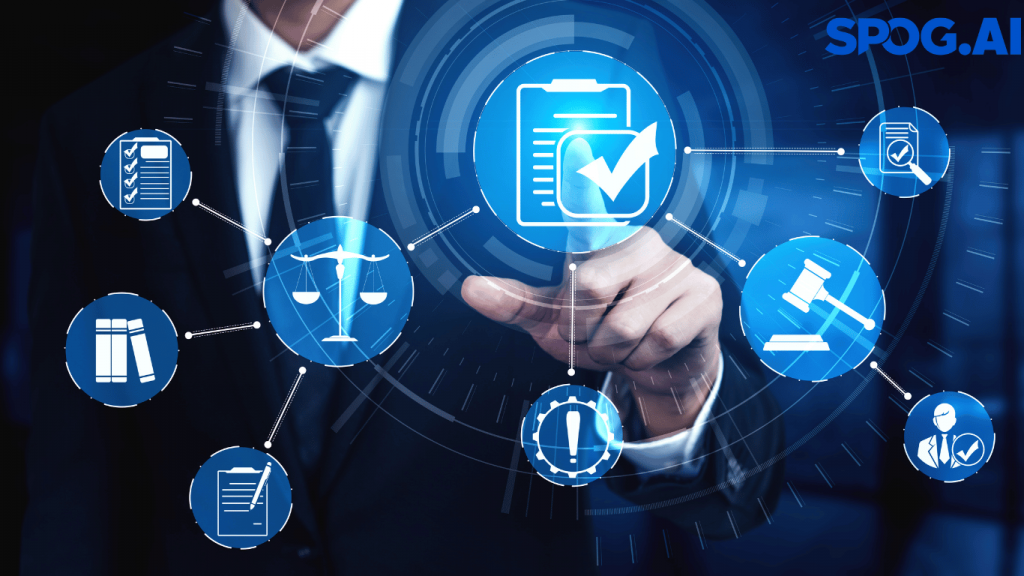When compliance gaps are only discovered during occasional audits, businesses face significant risks, including hefty fines and lasting reputational damage. This is where continuous compliance monitoring comes into play.
With continuous monitoring, companies can catch problems immediately, reduce audit fatigue, and build a culture that values transparency and accountability. Compliance should be a continuous effort, not a one-off event. However, continuous monitoring is easier said than done.
It requires a fundamental shift in mindset, robust technological infrastructure, and proactive engagement at all organizational levels. In this article, we’ll explore the transition from static compliance checklists to dynamic real-time monitoring, outline essential tools and technologies, highlight key benefits, and provide actionable steps to embed continuous compliance into your organizational culture.
Transition from Static Checklists to Dynamic Compliance Monitoring
Traditional compliance management typically revolves around static, manual checklists completed at fixed intervals—monthly, quarterly, or annually. While these methods may offer temporary assurances, they often fall short in identifying real-time compliance risks. Static checklists are inherently retrospective, capturing only historical snapshots rather than current realities.
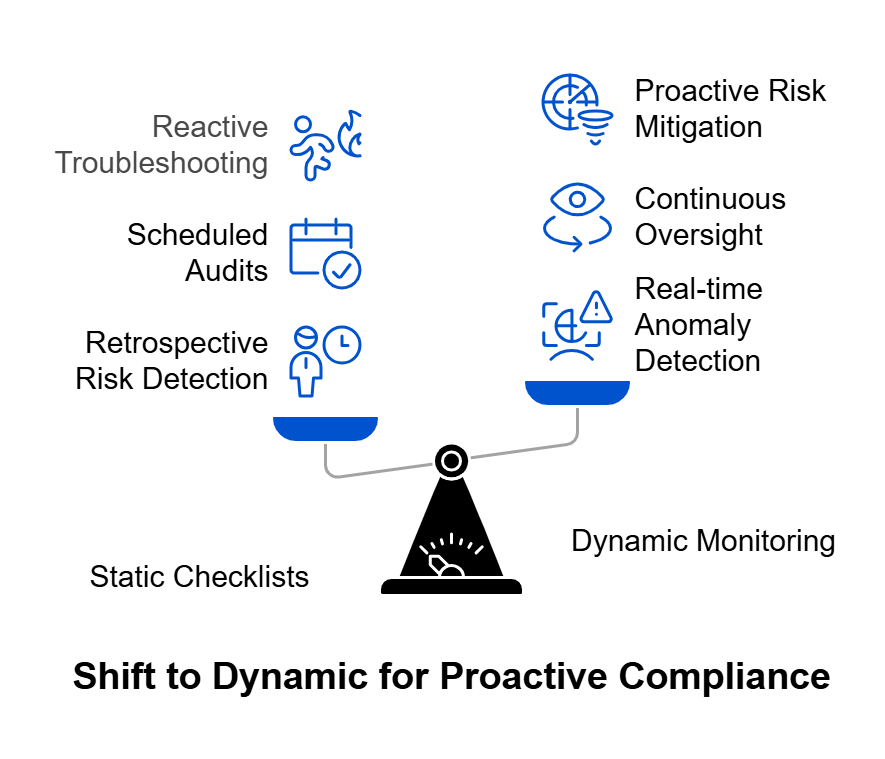
Dynamic compliance monitoring, on the other hand, integrates automation and real-time analytics, allowing continuous oversight and immediate detection of compliance anomalies. Rather than waiting for scheduled audits, dynamic systems proactively alert teams of potential compliance issues the moment they occur. This transition enables organizations to shift from reactive troubleshooting to proactive risk mitigation, greatly enhancing operational resilience and regulatory confidence.
Benefits of Continuous Compliance Monitoring
A report by Ponemon Institute reveals that the cost of non-compliance is 2.71 times higher than the cost of compliance. In this benchmark study, it was also found that an organization’s security posture had a great impact on the cost of compliance. The stronger the security posture, the lesser the compliance cost.
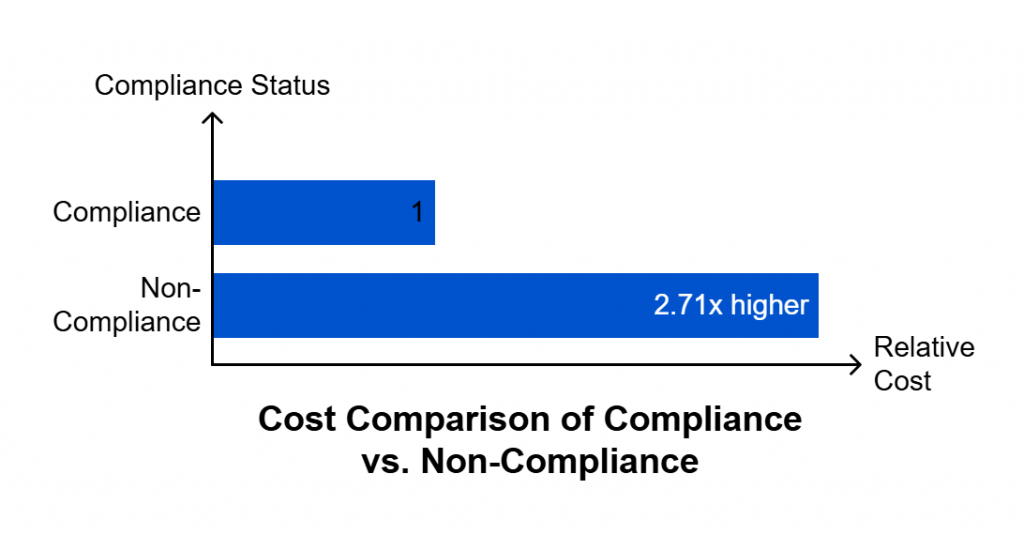
Apart from apparent cost benefits, continuous monitoring provides immense benefits in contrast to traditional methods.
1. Real-Time Risk Detection:
Continuous monitoring allows issues to be spotted and corrected immediately, preventing small compliance gaps from turning into major regulatory violations. Real-time alerts empower organizations to respond swiftly and effectively.
2. Reduced Audit Fatigue:
Automating compliance processes reduces dependence on manual, periodic audits. Compliance teams can focus more on strategic, value-added tasks rather than repetitive, time-consuming reviews.
A study revealed that organizations spend over $3.5 million annually on activities related to IT security and privacy compliance, dedicating approximately 58 working days each quarter to respond to audit evidence requests. Implementing continuous compliance monitoring can streamline these processes, reducing the workload and associated fatigue.
3. Enhanced Transparency and Accountability:
Continuous monitoring offers ongoing visibility into compliance status. This transparency not only builds trust among stakeholders and regulators but also reinforces a culture of responsibility throughout the organization.
4. Cost Efficiency:
By identifying compliance risks early, companies significantly cut down on the costs associated with fines, remediation, and operational disruptions. Proactive compliance management ultimately translates into substantial financial savings.
Organizations spend over $3.5 million each year on activities related to IT security and privacy compliance. By proactively managing compliance through continuous monitoring, companies can reduce these expenses and avoid potential fines
Essential Tools and Technologies for Continuous Compliance
To successfully implement continuous compliance monitoring, organizations must leverage the right tools and technologies. The effectiveness of continuous compliance largely depends on the quality, scope, and integration of these tools
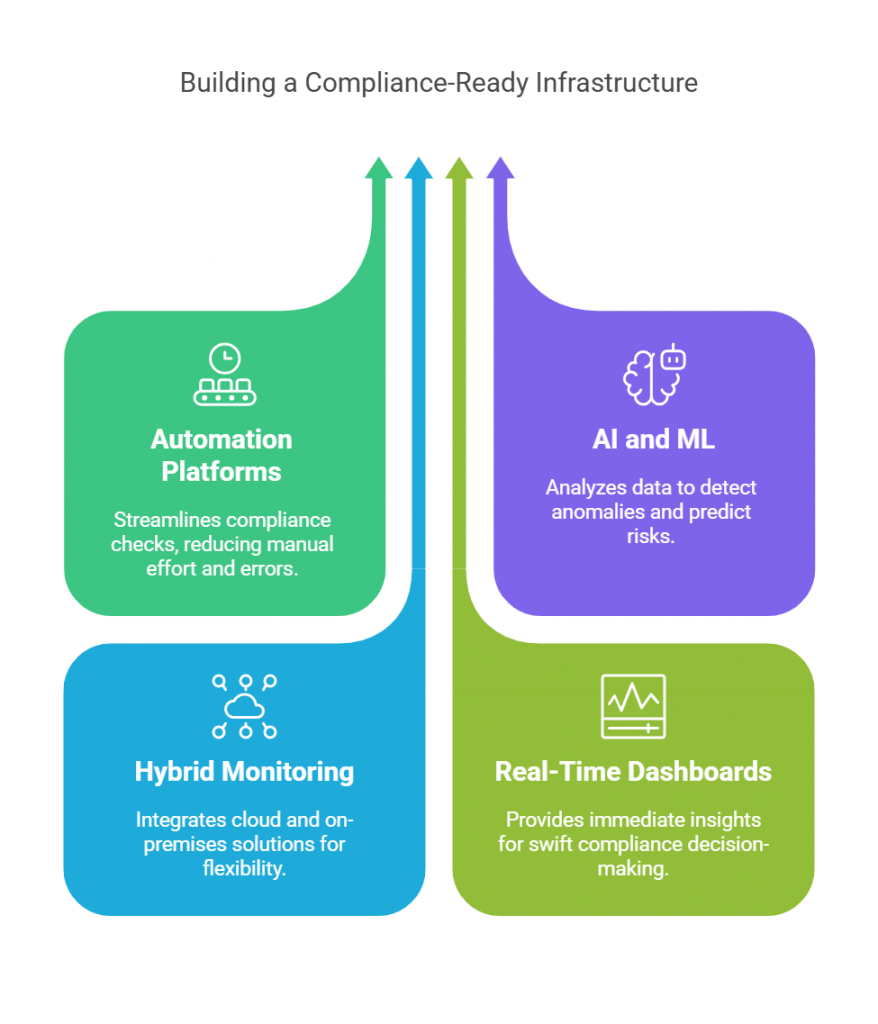
Here are some critical components:
1. Automation Platforms:
Tools that automate routine compliance checks, policy enforcement, and reporting processes, reducing manual effort and human error. Automation streamlines operations and ensures compliance processes are consistently executed.
Typically, automation platforms encompass workflow automation, automated alerts and notifications, compliance tracking modules, and integration capabilities with various internal and external data sources.
The scope and breadth of automation can vary based on each provider. The more comprehensive and centralized the platform, the better it is for real-time monitoring.
2. Artificial Intelligence (AI) and Machine Learning (ML):
AI-powered solutions analyze vast amounts of data to quickly detect anomalies and predict compliance risks. These advanced analytics tools provide early warnings about potential issues before they become critical.
The strength of AI lies in its ability to rapidly learn from historical compliance data, recognize patterns, and proactively provide early warnings about issues before they escalate. AI and ML technologies typically include anomaly detection algorithms, predictive analytics models, and natural language processing (NLP) to interpret compliance-related documents and communications.
3. Hybrid Monitoring Solutions:
Cloud platforms enable scalable and flexible compliance monitoring across various organizational systems. They facilitate rapid deployment, integration with existing tools, and centralized management of compliance data.
That being said, companies may have on-premises solutions as well. Thus, compliance monitoring solutions should take a hybrid route and provide the capability to integrate with both cloud and on-premises security and monitoring solutions.
Prominent hybrid monitoring tools currently in the market include Splunk, SolarWinds, IBM QRadar, and ManageEngine, which offer versatile integration options and comprehensive compliance monitoring capabilities.
4. Real-Time Dashboards and Reporting Tools:
Interactive dashboards provide immediate, easy-to-understand insights into compliance status. These tools offer actionable information, enabling swift decision-making and facilitating effective communication of compliance status to stakeholders.
Customizable dashboards empower stakeholders with personalized, actionable insights, enabling swift identification and response to compliance issues, and ensuring effective communication across different levels of the organization.
By integrating these essential tools, businesses can create a robust technological foundation that supports an effective and proactive approach to continuous compliance.
Steps to Build a Culture of Ongoing Compliance
Achieving continuous compliance is not only about adopting the right tools and technologies—it’s also about fostering an organizational culture that actively prioritizes compliance. Here are essential steps to build and sustain a culture of ongoing compliance:
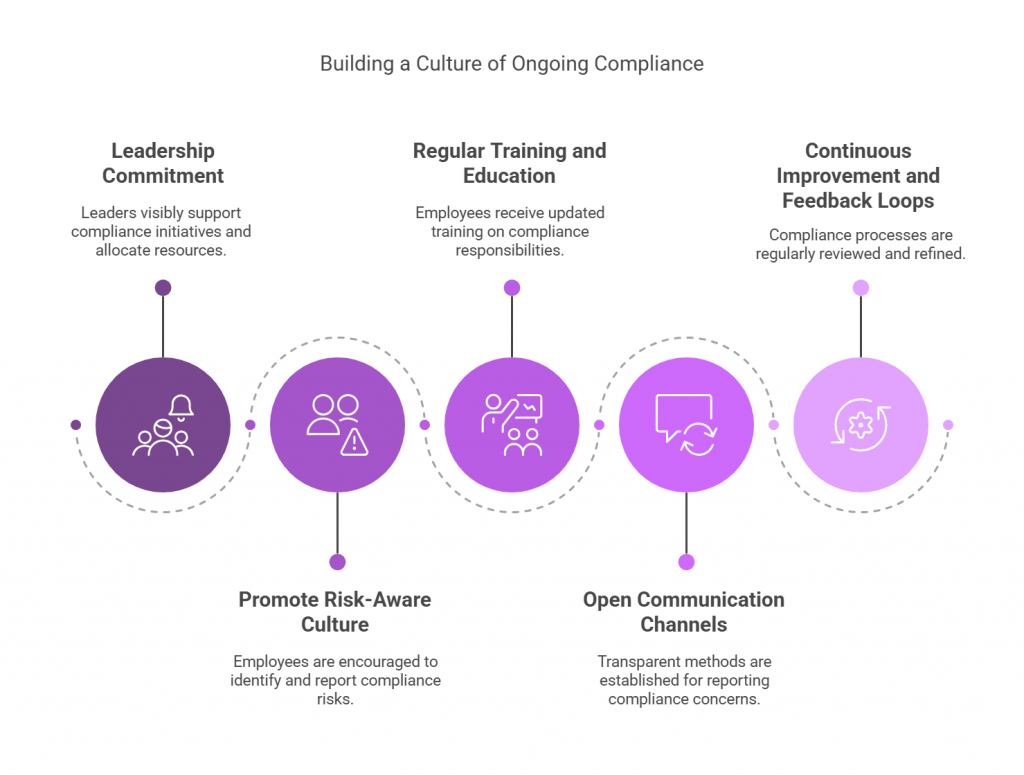
Leadership Commitment:
Continuous compliance starts at the top. Senior leaders should visibly support compliance initiatives, clearly communicate their importance, and allocate necessary resources. Leaders must consistently model compliance behavior and emphasize that maintaining compliance is integral to the organization’s success and integrity.
Promote a Risk-Aware Culture:
Organizations should actively foster a risk-aware culture where employees at all levels understand, anticipate, and appropriately respond to compliance risks. Encourage proactive identification and reporting of potential compliance threats, empowering staff to feel responsible for maintaining organizational compliance and integrity. Reward and recognize employees who exemplify risk awareness and proactive compliance behaviors.
Regular Training and Education:
Compliance requirements evolve continuously, making ongoing education critical. Employees should receive regular, updated training sessions that reinforce their understanding of compliance responsibilities, emerging regulatory requirements, internal policies, and procedures. Tailored, role-specific training sessions help ensure that all team members fully grasp their unique compliance obligations and responsibilities.
Open Communication Channels:
Establish transparent, accessible, and secure methods for employees to report compliance concerns or potential violations. Clear communication channels reduce hesitation or fear of repercussions, creating an environment of trust, accountability, and active employee participation. Encourage open dialogue about compliance and risk management through forums, town halls, or regular meetings.
Continuous Improvement and Feedback Loops:
Regularly review and evaluate compliance processes and integrate feedback from audits, stakeholders, and frontline employees. Use these insights to refine, enhance, and adapt compliance practices continuously. Implement agile processes that allow the organization to quickly respond to changing regulatory landscapes and emerging risks, ensuring compliance practices remain relevant and effective.
By following these steps, organizations can embed compliance into their everyday operations, creating resilience and ensuring long-term compliance success.
Final Thoughts
Compliance isn’t something you can afford to think about just once a year or during scheduled audits—it’s an ongoing process. Today’s dynamic regulatory landscape demands real-time vigilance, proactive risk management, and a culture deeply committed to transparency and accountability.
Transitioning from static checklists to continuous compliance monitoring might seem challenging, but the benefits are clear. By embracing advanced technologies, establishing clear communication, and embedding compliance into your company culture, your organization can quickly spot issues, reduce risks, and free up your teams to focus on strategic growth rather than reactive fixes.
Ultimately, continuous compliance isn’t just about avoiding penalties or meeting regulatory standards—it’s about building trust, strengthening your reputation, and positioning your business for lasting success in an increasingly regulated world.
